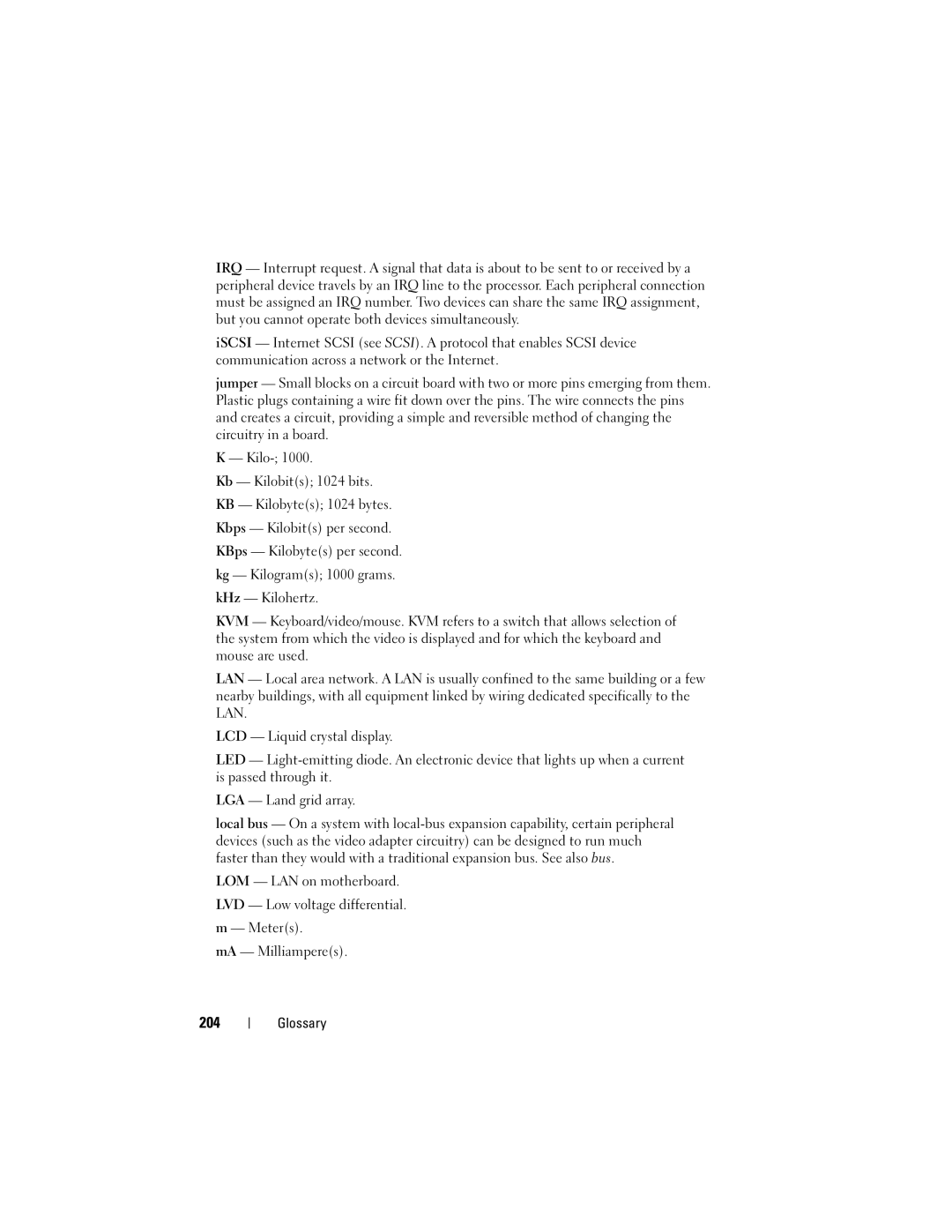IRQ — Interrupt request. A signal that data is about to be sent to or received by a peripheral device travels by an IRQ line to the processor. Each peripheral connection must be assigned an IRQ number. Two devices can share the same IRQ assignment, but you cannot operate both devices simultaneously.
iSCSI — Internet SCSI (see SCSI). A protocol that enables SCSI device communication across a network or the Internet.
jumper — Small blocks on a circuit board with two or more pins emerging from them. Plastic plugs containing a wire fit down over the pins. The wire connects the pins and creates a circuit, providing a simple and reversible method of changing the circuitry in a board.
K —
Kb — Kilobit(s); 1024 bits.
KB — Kilobyte(s); 1024 bytes.
Kbps — Kilobit(s) per second.
KBps — Kilobyte(s) per second.
kg — Kilogram(s); 1000 grams.
kHz — Kilohertz.
KVM — Keyboard/video/mouse. KVM refers to a switch that allows selection of the system from which the video is displayed and for which the keyboard and mouse are used.
LAN — Local area network. A LAN is usually confined to the same building or a few nearby buildings, with all equipment linked by wiring dedicated specifically to the LAN.
LCD — Liquid crystal display.
LED —
LGA — Land grid array.
local bus — On a system with
LOM — LAN on motherboard.
LVD — Low voltage differential.
m — Meter(s).
mA — Milliampere(s).
